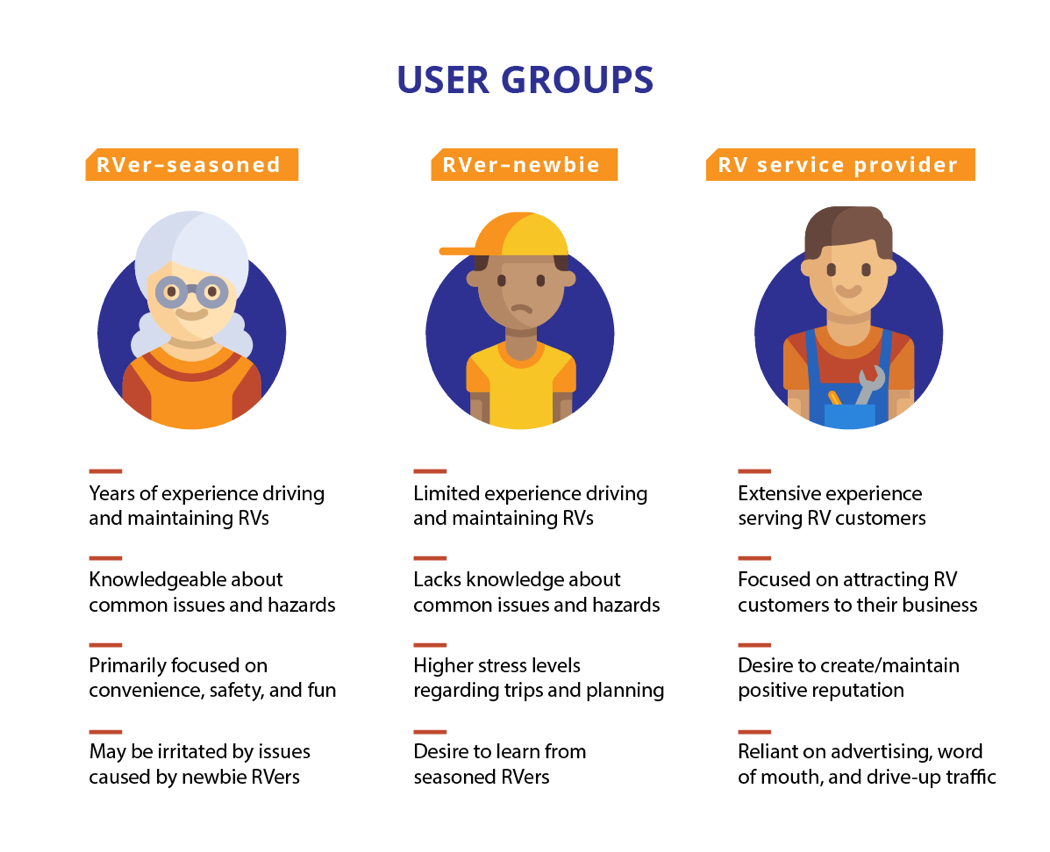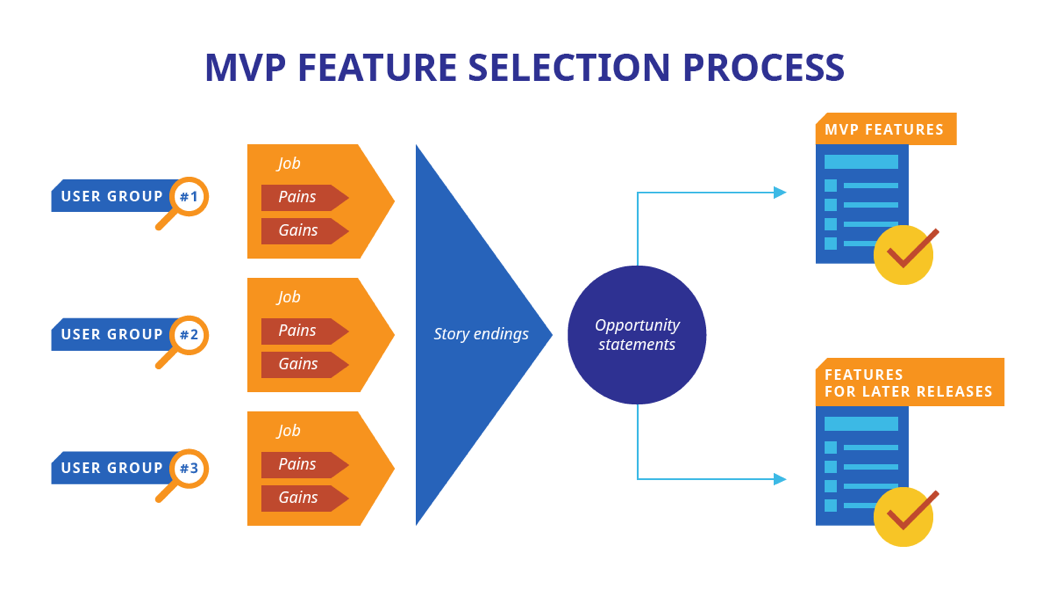How to Build an MVP Development Framework

How to Build an MVP Development Framework
Contributed ContentYour product will only succeed if it solves problems users genuinely care about. That’s why starting with an MVP is the single best way to ensure your product’s success.
Successful product development requires understanding what customers want. Learning how to build a minimum viable product will get you to that understanding faster, helping you reduce risks and costs.
If you could find out what your customers truly want, wouldn’t you embrace that opportunity? That’s exactly what the minimum viable product process achieves.
Your minimum viable product, or MVP, contains the minimum features required to satisfy your product’s first users. Eric Ries’ "The Lean Startup" popularized the concept.
Starting with an MVP helps you get to market faster. This lets you gather actual user feedback sooner, learning what customers value and where improvements are needed. After all, until your product is in the hands of customers using it in its intended context, the product you launch is only a hypothesis.
As the founder and CEO of Distillery, a full-service software design and development company, I’ve participated in hundreds of product development projects. We always encourage starting with an MVP. It’s the single best way to ensure product success.
How do you develop an MVP? Start with a well-thought-out MVP development framework that helps you make the best hypothesis about what users want.
This involves three key steps:
- Identifying your product’s goals and establishing criteria for success
- Exploring your opportunities by mapping user journeys
- Making smart decisions about which features to include in your MVP
Step 1: Identify Product Goals and Success Criteria
Successful MVP product development begins with setting clear goals and establishing what success looks like.
When setting goals, ask yourself: Why is your product needed? Why will users care? Your product must fulfill a genuine need. If it doesn’t, it will go nowhere.
Let’s say you want to build a route-mapping app for RV enthusiasts. Think from your users’ perspective. What’s the central user problem you’re solving?
Mapping apps find fast routes that avoid traffic. They don’t provide the specialized information RV owners need. A low bridge could be disastrous for a tall RV. A too-narrow roadway could lead to accidents. RVs also require special services (e.g., gas stations with pull-throughs, dump stations, and more parking space) that aren’t available along some routes.
You believe RVers care about these problems. You decide your goal is to build a mobile app that uses crowdsourced information (à la Waze) to help RVers find RV-friendly travel routes and resources.
The next step is determining how you’ll measure your MVP’s success. Get specific, establishing clear metrics. For example, you might define success as:
- Obtaining user-reported data from 500+ users in the first month post-launch
- Achieving 100,000 downloads in the first six months
- Obtaining media coverage in two RV-focused publications before launch
Don’t begin your minimum viable product exercise without first establishing goals and metrics. This step lays a necessary foundation for the MVP development process.
Step 2: Explore Your Opportunities
Deciding which features to build requires understanding what users value the most. By investigating their problems, goals, motivations, and priorities, you identify your opportunities.
Your MVP should include only the most useful and important features from the user’s perspective. This step focuses on improving your understanding and validating that you’ve set the right goals for your mobile app.
Mapping User Journeys
User journey maps are a research-based visual representation of a user’s relationship with a product over time. They describe the sequence of actions users may take to solve their problems. They also include users’ decisions, resulting actions, and thoughts and feelings throughout their journeys.
Creating a user journey map helps you flesh out your MVP development framework. To get started:
- Begin by identifying your users. Who will use your product?
- Identify your users’ “story endings.” What goals do they hope to achieve?
- Identify your users’ “jobs.” What sequence of actions will they take to reach their story endings?
- Consolidate the information. Organize your ideas in flowcharts, tables, or other graphical forms.
For your RV app, your user research identifies three different types of users that have distinct attributes: “RVer – seasoned,” “RVer – newbie,” and “RV service provider.” These eventually become your personas.

Your MVP should focus on the users to whom you can most quickly provide the most value. You should also consider who will use, pay for, and tell others about your product.
Given these considerations, your user research may find that your MVP should focus on the “seasoned” group. Their needs represent the core problem you set out to address. Solving their problems will solve many of the problems newbies face. Being more frequent travelers, they’re also likely to find the most value in your app.
The example below hones in on the seasoned group.
| User | Jobs (Actions) | Story Endings |
|---|---|---|
| RV enthusiast: seasoned |
|
Safe, convenient travel route that contains needed amenities |
You should flesh out examples for all user groups. The process helps you identify not only MVP features but also features for future releases.
Creating “Pain-and-Gain” Maps
Next, create a “pain-and-gain” map for each job.
“Pains” are problems users often experience when completing jobs. “Gains” represent value achieved when “pains” are overcome and jobs are completed.
During your research, ask users what they think and feel at each step. Be as thorough as possible in understanding pains and gains for each job. For example:
| Job (Action) | Pains | Gains |
|---|---|---|
| Understand route hazards and limitations |
|
|
Have your users weigh the relative importance of these pains and gains. The goal is to understand which user problems are most worth solving.
Develop Opportunity Statements
Finally, translate your pain-and-gain maps into opportunity statements. These statements help you determine which features to include. For example:
| Job (Action) | Opportunity Statement |
|---|---|
| Understand route hazards and limitations | How can we make it easier to plan — and share information about — safe, hazard-free travel routes suitable for RVs? |
The information you’ve compiled creates your user journey map. These maps are most commonly represented as infographics illustrating users’ emotional experience as they encounter jobs on the way to their story endings (see examples).
MVP success depends on understanding which features users value most. Make sure you thoroughly understand and explore your opportunities to build the most successful app possible.
Step 3: Determine Which Features You’ll Build
You’ve identified several opportunities. It’s time to prioritize and thereby determine your MVP features.
Focus on features that solve the biggest pains that aren’t currently being solved.
You’d still like to help users locate amenities along routes. Google can help people with that. Newbies may appreciate packing lists or pre-trip safety checklists. These, too, are available online. Users may enjoy posting trip itineraries others can rate and review or participating in an RV-specific social network. They could use Facebook for that.
These additional features are fantastic ideas. But since they’re already being solved elsewhere, none of them should be in your MVP. Consider these ideas for later releases.
MVP product development includes only the features that will most quickly deliver the most value to the most users. For your RV MVP, that means:
- Route-planning functionality
- Ability to view and create user-reported information (e.g., road conditions, hazards, tips)
- Ability to provide feedback/updates on user-reported information so it remains accurate
The graphic below gives an overview of the process you used to arrive at this decision.

Once your MVP is on the market, user feedback will help you refine existing features and prioritize which additional features are worth implementing.
Ensure Product Success by Starting With an MVP
As my software development experience has shown time and time again, starting with an MVP brings countless benefits.
An MVP is cost-efficient and user-centric, enabling you to test ideas with actual users before investing too much money in development. It ensures you’re developing only the features users genuinely want. It creates a foundation for an iterative development process that facilitates continual improvement. It can even help you demonstrate product potential to investors, securing more funding.
Don’t waste time or money, and focus by developing a product with features nobody wants. Let the MVP development process build you a foundation for success.
